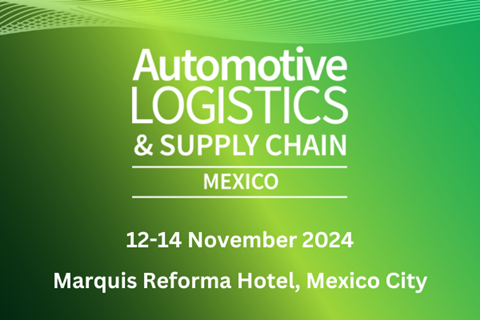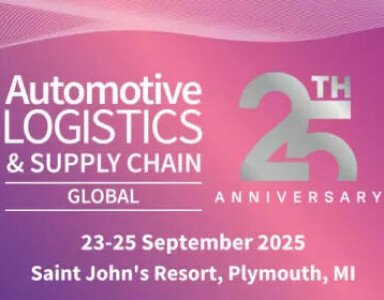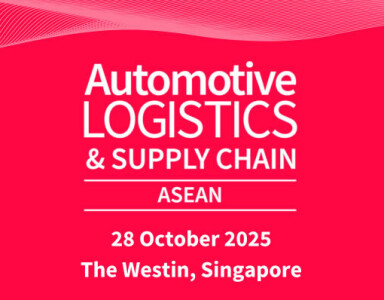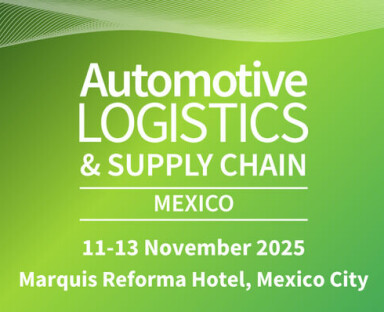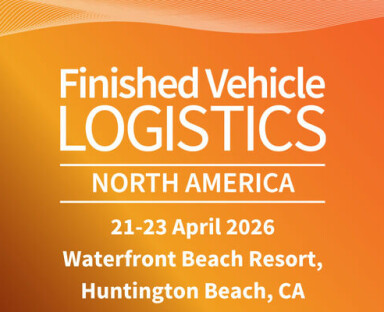
Mexico needs a long-term framework of certainty to make good on its future as North America’s automotive hub
The majority of Mexico’s vehicle and parts output goes to the wider North American market and that demand is increasing, but to keep up with that demand automotive companies need to work more closely with the government to improve infrastructure and security, according to speakers at the tenth Automotive Logistics and Supply Chain Mexico conference.
Mexico’s ability to regain the strong growth trajectory it was on before Covid is down to its ability to attract and localise carmakers and suppliers. It can do that because of its location as a production hub in North America, its strong global trade agreements beyond the US-Mexico-Canada Agreement (USMCA), and its talented and hardworking labour force.
However, the country’s transport and logistics infrastructure needs attention from public and private enterprise, and there needs to be more joined up thinking between public and private enterprises more widely, including on security. The Mexican automotive industry also needs better digital connectivity to make logistics more efficient and secure. Removing the risks to smooth the supply of parts and materials, and the shipment of finished vehicles, is a clear advantage in a disrupted world.
Mexico will make 3.94m vehicles in 2024, according to figures from market analyst JD Power. It is the country’s highest annual production figure, making it seventh globally in terms of annual production volume. That surpasses the record 3.45m set in 2018, and with further room for growth into its current fully installed capacity of 5.8m units.
Domestic vehicle sales in Mexico currently stand at 1.47m according to the analyst, ranking it 12th globally, and if it hits 1.5m by year end that will be its third best year ever. That figure is then likely to be the sales average leading to 2029, according to JD Power, when sales are expected to top out at around 1.62m, reflecting stable demand from Mexican car buyers.
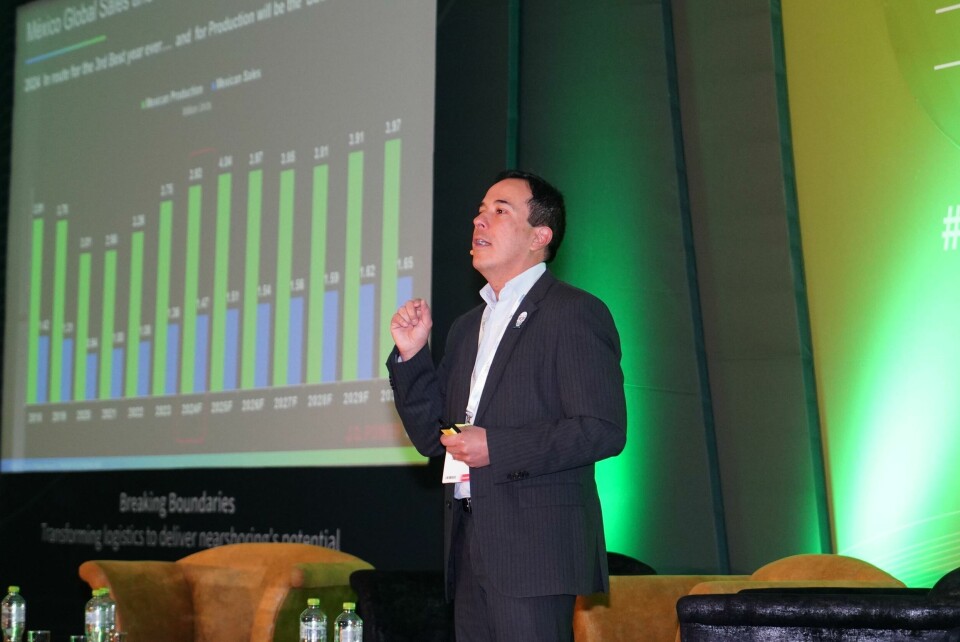
Gerardo Gómez Gálvez, senior director and country manager for Mexico at JD Power, speaking at ALSC Mexico this year
However, vehicle production will continue to increase above domestic sales because of the high number of vehicles Mexico exports abroad. Mexico’s National Institute of Statistics and Geography (Inegi) has reported that vehicle exports stood at 2.9m between January and October 2024, an increase over 2023 of +6.8%. Mexico is a production hub for North America and the country’s top three vehicle makers by production output are GM, Nissan and Stellantis (see table). Those carmakers export 80% of what they make in Mexico and the majority goes to the US.
According to JD Power’s senior director and country manager for Mexico, Gerardo Gómez Gálvez, who was speaking at this year’s Automotive Logistics and Supply Chain (ALSC) Mexico conference, that is because the US is producing 10.5m vehicles a year but selling 16m.
Expanding carmaker investments in Mexico’s automotive industry
Carmakers established in Mexico are looking to expand capacity comfortable in knowledge that production quality in Mexico is equal to the US. For example, Toyota announced in November an investment $1.4 billion in its two plants in Mexico for the production of the new generation of the Tacoma pickup, including the hybrid electric version. Stellantis has said it is expanding its Saltillo plant and there is speculation that could include pick up production, and Audi has confirmed $1 billion investment in its Puebla factory to make EVs. These follow BMW’s announcement last year of a $855m investment in its Nuevo Leon factory, which will also make EVs from 2027 on the Neue Klasse platform.

Monica Garcia, director of global procurement and supply chain, GM Mexico spoke at ALSC Mexico 2024 about having transparent relationships with suppliers
GM Mexico, currently Mexico’s leading carmaker by production volume, has spent the last decade or more locating suppliers closer to its manufacturing plants and the nearshoring strategy succeeded in developing a strong supply base in Mexico, reducing the risk and the complexity of logistics. According to Monica Garcia, director of global procurement and supply chain at GM Mexico, that is dependent on transparent relationships with its suppliers and service providers to ensure it delivers on its product expansion, including in the transition to EVs. Speaking at this year’s Mexico event Garcia said that to retain its lead position in output GM is working to build a resilient supply chain and secure logistic capacity. “We want not only to build the vehicles but to ensure that we can deliver those vehicles to our customers in an efficient way,” she said.
While the majority of Mexico’s export production does go to the US (and it remains to be seen how this is affected by the recent election of Donald Trump as returning president), Mexico has an open economy with 14 free trade agreements (FTAs) covering 50 countries that provides it with competitive advantages in tariffs and duties. Established carmakers and suppliers, or those setting up in Mexico, are looking to the government to maintain and strengthen these agreements and ensure their compliance for a secure future.
With regard to the future of the automotive trade between Mexico and the US it is also worth remembering that of the parts the US buys worldwide, 43% come from Mexico and developing an alternative would require ten years of trade development.
Overcoming nearshoring challenges in Mexico’s auto supply chain
Localising supply is not new to Mexico. That took off when the Nafta trade agreement was first signed in 1992. It was led by Japanese, Korean and German carmakers along with an extensive network of suppliers. Chinese carmakers are now joining that influx. The US-Mexico-Canada Agreement (USMCA) that replaced Nafta in 2020 is encouraging more companies to integrate in the North American supply chain through Mexico.
Mexico is also a hub for parts production, both for growing demand from assembly plants based there and for exports to wider North America. In fact, 87% of Mexican-based parts production are exported, making it a powerhouse for the wider automotive market. Vehicle production in Mexico is supported by more than 382,000 automotive suppliers.
“This government is open to help the companies, but the private sector needs to help the government understand their needs”
As reported in the winter edition of Automotive Logistics magazine, the demand for parts from Mexico for US assembly has led many suppliers and OEMs to beat a path to Mexico. According to the Mexican Automotive Industry Association (AMIA), last year saw the automotive sector account for 4.7% of national GDP and 21.7% of manufacturing GDP, generating a million jobs along the way.

Francisco Gonzalez Diaz, executive president of the National Auto Parts Industry association (INA)
Added to which, the Mexican government provides nearshoring subsidies aiming to promote foreign investment and job growth. There are two subsidies available: the Payroll Tax Subsidy (ISERTP), which offers a 100% subsidy for 60 months following the start of operations; and the Environmental Tax Subsidy given for 12 months following the start of operations affecting emissions and waste disposal.
Nearshoring has generated renewed interest from international investors because of benefits such as USMCA trade deal and its rules of origin, which promote the development of automotive supply chains in Mexico. However, proximity to the North American market alone is not enough to turn nearshoring into tangible benefit for Mexico’s supplier industry. That requires an environment of certainty and stability, according to Francisco Gonzalez Diaz, executive president of the National Auto Parts Industry association (INA). “To be truly competitive, we need a logistical, technological and governmental ecosystem that is fully aligned,” he said. That will help companies derive the best options in terms of cost, efficiency and sustainability.
Speaking at this year’s ALSC Mexico conference, Gonzalez said that for Mexico to reach its full potential as an automotive hub requires strong governmental and commercial policies that guarantee a long-term framework of certainty.
“Mexico must prove that it can ensure the security in every link of the supply chain. This vision requires a strategic triple helix collaboration between the private sector, the government and the academy,” he said.
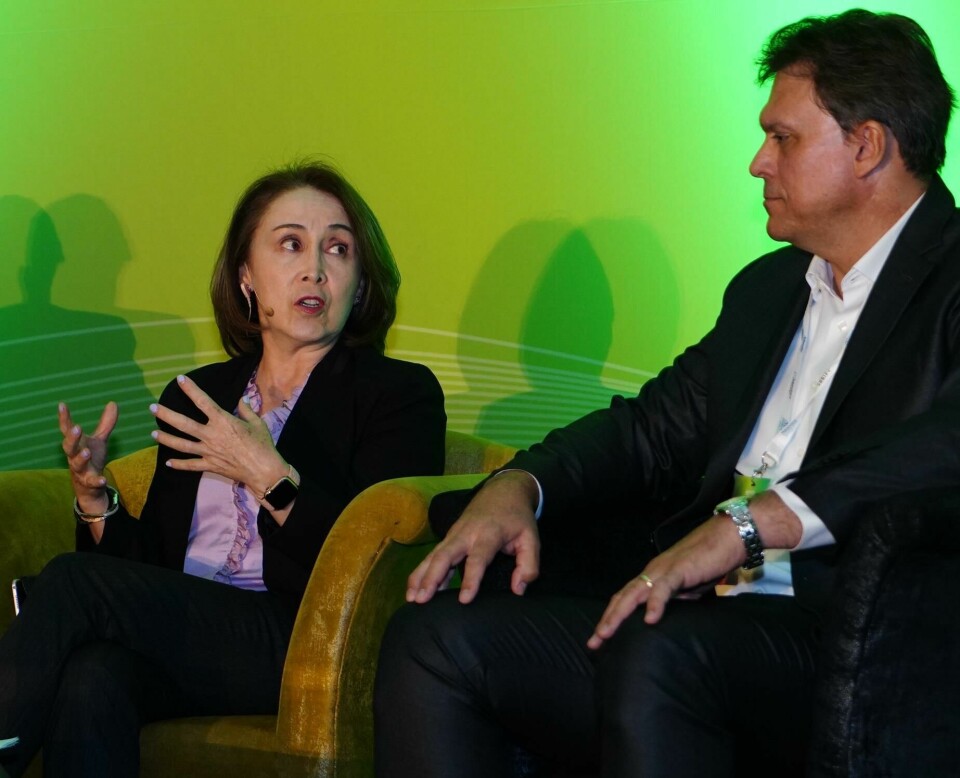
Claudia Avila Connelly, International trade, nearshoring and economic development expert said the current Mexican government is planning to reinforce the infrastructure in maritime ports, in land borders, including more than 100 industrial parks
Claudia Avila Connelly, an international trade, nearshoring and economic development expert, who shared a panel with Gonzalez at this year’s ALSC Mexico conference, agreed on the need for alignment on a systemic and secure vision.
“This government is open to help the companies, but the private sector needs to help the government understand their needs,” she said. “The current government is planning to reinforce the current infrastructure in maritime ports, in land borders, including more than 100 industrial parks.”
Strengthening security for Mexico’s automotive logistics
Security and safety has long been an issue for parts and vehicle transport in Mexico, and carmakers and suppliers alike agree that it needs improvement, as do the logistics providers responsible for moving those parts and finished vehicles. That improvement is also linked with closer alignment and communication between companies and government.
Victor Salazar, international chief commercial officer at Mexico’s largest freight transport company, Trayecto, said more information needs to be shared in both directions between government and the logistics providers who are dealing with safety and security issues on daily basis. According to Salazar the government is open to it and the secretary of security is eager to work with providers to understand better together they can be effective in fighting theft and vandalism.
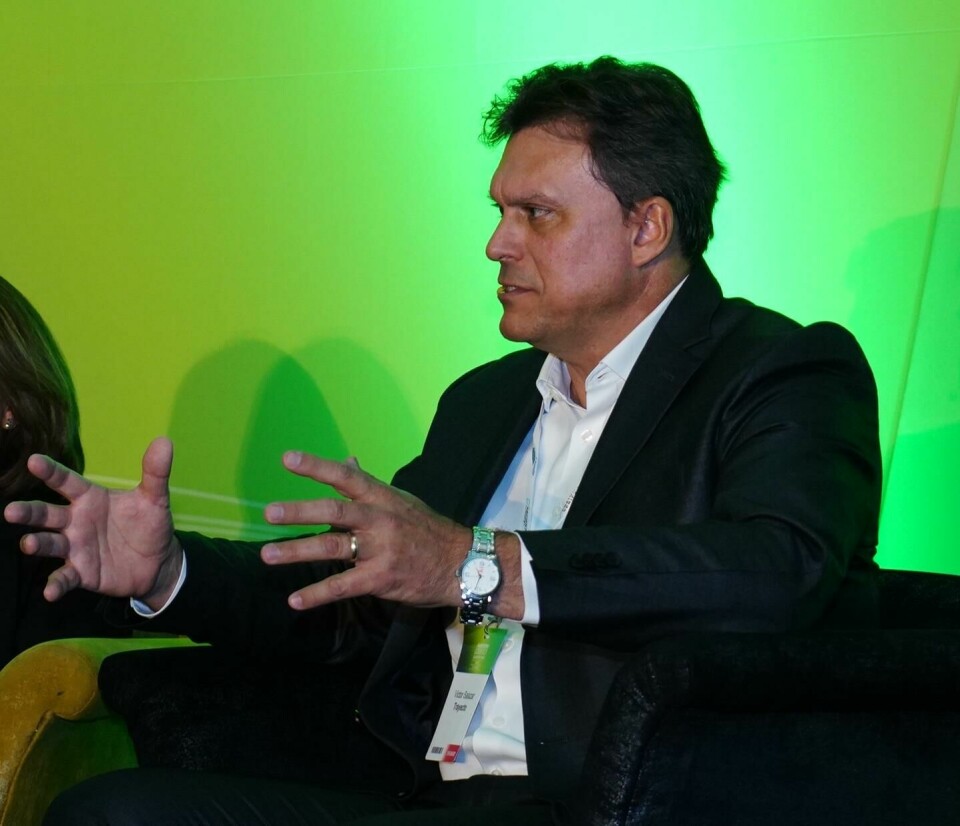
Victor Salazar, international chief commercial officer at Mexico’s largest freight transport company, Trayecto speaking on stage at Automotive Logistics & Supply Chain Mexico 2024
“We have to train and create more awareness in our people, and work together with [everyone] that is participating in the supply chain to do a better job, while the authorities do their job to reduce this,” said Salazar, adding that doing so would be another way of improving productivity in the supply chain.
Toyota Mexico’s Lizette Gracida, senior director of external affairs and trade compliance, said that the carmaker, like others, had been impacted by security problems, as had its suppliers.
“What we have been doing to try to mitigate the impact is to work and collaborate with the army and with the National Guard on certain protocols that allow us to move our freight in a more safer manner,” she said. “What it should be done is to design a better national security strategy and to appoint appropriate people across the board that really understand the problem and not only solve the situation on the highways… but also ensure the security conditions in the communities and across the country.”
Gracida said Toyota would continue to collaborate with the authorities on finding a better way to protect its business.
Creating a stable investment climate for Mexico’s automotive sector
Greater security will of course have an impact on attracting more companies to Mexico. More than three quarters (78%) of the delegates canvassed at ALSC Mexico reported that there is current investment in nearshoring. Around half of the logistics experts (49%) said there is currently “small to moderate investment” in nearshoring, while a further 29% said there is “significant” investment in nearshoring in Mexico.
According to Gonzalez at INA, nearshoring has generated renewed interest from international investors because of benefits such as the USMCA and its rules of origin which promote the development of supply chains in Mexico. To turn that into tangible benefit through action, however, requires an environment of certainty and stability.
Lizette Gracida said that nearshoring is a historical opportunity for Mexico but warned that while foreign direct investment by established carmakers is healthy, investments from new players remained quite low.
Another problem is the attractiveness of Mexico as a production location. The Savills Nearshoring Index for 2024 ranks Mexico in 13th place. The index ranks 26 countries on factors of interest to companies looking for new locations to shorten or diversify their supply chains and/or reduce their reliance on foreign imports. Those factors include resilience, economic cost (including rents, energy and labour costs), business environment and performance on environment and social governance.
Savills Nearshoring Index 2024
| Rank | Country | Region |
|---|---|---|
1 | Portugal | EMEA |
2 | Czech Republic | EMEA |
3 | Poland | EMEA |
4 | Sweden | EMEA |
5 | Japan | APAC |
6 | Singapore | APAC |
7 | Canada | Americas |
8 | South Korea | APAC |
9 | Spain | EMEA |
10 | United Kingdom | EMEA |
11 | Vietnam | APAC |
12 | China | APAC |
13 | Mexico | Americas |
14 | France | EMEA |
15 | Germany | EMEA |
16 | Norway | EMEA |
17 | Austria | EMEA |
18 | Netherlands | EMEA |
19 | Italy | EMEA |
20 | United States | Americas |
21 | India | APAC |
22 | Denmark | EMEA |
23 | Australia | APAC |
24 | Romania | EMEA |
25 | Ireland | EMEA |
26 | Belgium | EMEA |
Source: Savills Research
“If Mexico wants to fully capitalise on nearshoring coming to the country then it needs to address challenges such logistics infrastructure, availability of clean energy, digital connectivity, human capital development and trade facilitation,” said Gracida.

Toyota Mexico’s Lizette Gracida, senior director of external affairs and trade compliance
The impact on vehicle quality by the delivery process in Mexico is an issue for all brands regardless of origin and quality monitoring across the journey from factory to dealership is very important.
Javier Valadez, director of operations at Paccar Mexico, also highlighted the importance of fostering a workforce capable of managing the increased complexity and volume of operations resulting from nearshoring trends. “Nearshoring has amplified the demand for skilled professionals who can manage cross-border logistics efficiently,” he explained.
Enhancing Mexico’s infrastructure for automotive growth
Logistics within Mexico and across its ports and borders continues to be challenged by transport disruption. A lot more work is needed on Mexico’s infrastructure to support the accelerating growth of its supply chain. “This means not only expanding physical infrastructure – ports, roads and rail terminals – but also strengthening technological infrastructure which is key to reducing times, minimising costs and improving the traceability of components in transit,” said Francisco Gonzalez.
It also needs to address the administrative challenges facing investment by tier two and three suppliers which do not have the resources to manage the certification required for cash flow or fast lane access, according to Gracida. “It requires a big department to be able to comply. If Mexico wants to attract investments from tier two and three companies it makes sense to work on the policy they need, and refine processes to remove administrative burdens that are hurting these suppliers,” she said.
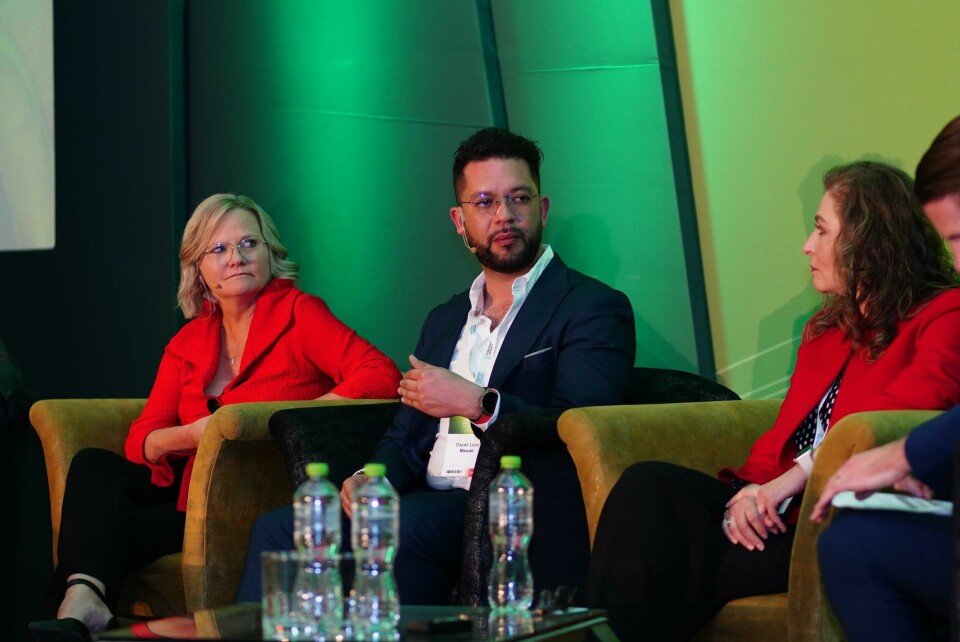
Dayan León, deputy director of parts logistics, Nissan Mexicana said the OEM has built a strong supplier network and is looking beyond the tier ones to nearshore suppliers along the tier-n chain to ensure greater stability,
Nissan has built a strong supplier network and is looking beyond the tier ones to nearshore suppliers along the tier-n chain to ensure greater stability, according to Dayan León, deputy director of parts logistics, Nissan Mexicana. That security of parts supply also relies on redesigning the logistics network to get the most of the available infrastructure in place. That needs the engagement of expert teams openly sharing ideas to solve problems co-create new flexible services from a 360-degree view.
“We dare to test, fail, unlearn and try once again,” said Leon. “You cannot only have the transport, you need the customs and the port, you need to have everybody looking for a solution. The teams are brilliant and they start creating something very new that works and everyone agrees on. That’s what we are doing right now, creating together.”
Impact of Chinese imports on Mexico’s automotive market
At the same time that established carmakers and tier one suppliers are expanding operations in Mexico, there are high volumes of Chinese-made vehicles flooding into the country, and Chinese carmakers are now looking at Mexico as a production base for the North America region. As an example, Chinese vehicle maker JAC made more than 20,000 vehicles in Mexico over January-October period this year, an 11.9% increase over same ten-month period in 2023.
According to JD Power’s Gómez, China is at overcapacity with production at 30m, which is above domestic sales of 26m, and carmakers there are looking to export excess inventory. Mexico is a very attractive market for Chinese exports because Chinese carmakers can compete aggressively on price and their vehicles have high levels of in-car technology which are attractive to the buyer.
| Top ten vehicle makers in Mexico Jan-Oct 2024 | |
GM | 746, 393 (+22%) |
Nissan | 575, 366 (+9.8%) |
Stellantis | 358 481 (-9.8%) |
Volkswagen | 340 205 (+13.6%) |
Ford | 336 139 (+9.3%) |
Kia | 225, 900 (+4.3%) |
Toyota | 201 670 (-15.4%) |
Mazda | 176, 787 (+4%) |
Honda | 166 683 (+19.6%) |
Audi | 126,518 (-17.5%) |
Gómez said that last year Chinese brands closed with about 10% of the market share, with around 130,000 units. Between January and October this year Chinese brands account for 110,000 units, about 8% higher than the same period last year – and that’s not including new brands that are not reporting yet, which he said could add an additional 50,000 units.
“In the last four years, more than 30 Chinese brands have entered the [Mexican] market,” Gómez said. “There are more than 300 Chinese brands that could come anywhere at any moment and they have big opportunities.”
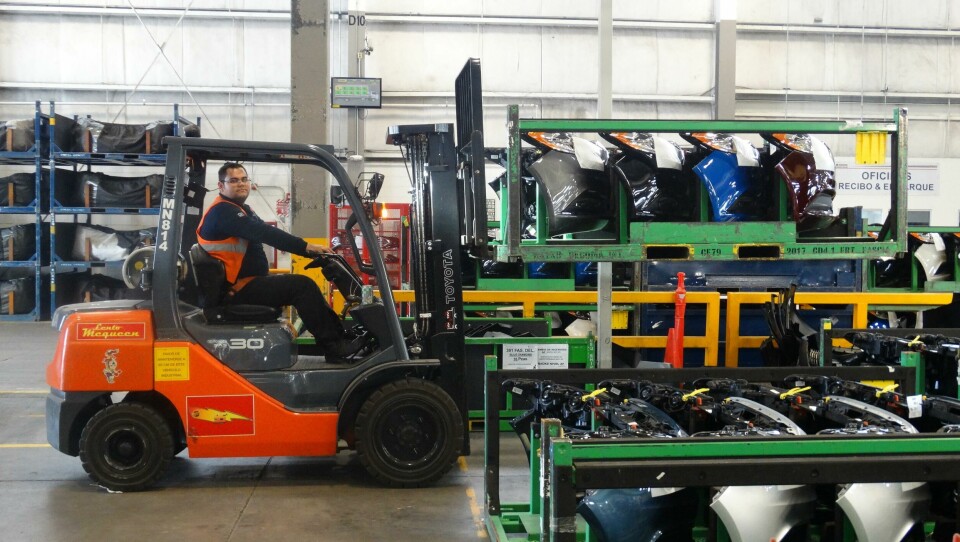
Magna has a significant presence in Mexico
However, according to JD Power’s Sales Satisfaction Index, which analyses customer buying experience from webpage to delivery, brands from China are performing below what the Mexican consumer is expecting. They are also underperforming on aftersales services and so those Chinese carmakers need to look at what else they could do to match the requirements of the market, according to Gómez. He said while the price of Chinese vehicles and the cost of aftersales services are affordable not everything is about price and the Mexican customer is used to a certain level of service. On top this other quality research data from JD Power shows that Asian brands have 294 problems reported per 800 vehicles and, taken together, Chinese companies need to understand how to satisfy the customer and ensure they return for vehicles and services, which if successful will translate into a secure future for the brands there.
“My recommendation is first build all the aftersales services and processes before you start selling because once you hit the market, it’s going to be really tough,” said Gómez.
The influx of Chinese brands includes fully electric vehicles, (or new energy vehicles – NEVs) though Gómez said that the adoption of NEVs by consumers in Mexico is going to take a while because preparatory issues such as charging infrastructure, pricing and incentives, have yet to be addressed.
Gómez said that currently 38% of global vehicle sales are made up of electric and hybrid vehicles but that is going to increase to 60% by 2030 and pure electric will take the greater portion from 2028. However, by 2030 electric and hybrid vehicles will only account for 18% of sales in Mexico. EVs, including hybrids, only account for 8% of the market and that is only going to increase by 10% to 2030.
Driving digital transformation in Mexico’s automotive logistics
Looking ahead, the prospects for Mexico’s future as a global automotive trading location remain positive even if there are more immediate uncertainties related to trade with the US.
Continued investment in infrastructure is important to keep pace with increased inbound shipments to manufacturing locations in Mexico, as well as for finished vehicle shipments out to global export markets. As important is investment in digital technology to improve supply chain visibility and help in the fight against theft and vandalism. President Sheinbaum has set up a new federal agency for Digital Transformation and Telecommunications in Mexico and appointed José Merino as its head.
“One of the goals of this new secretary is to have more digitalisation and procedures to fight corruption but also [improve] security to track merchandise and to have smart security highways,” said Claudia Avila.
She said that automotive companies and logistics providers needed to follow up on the creation of a new digital department and propose new ideas to government on the application of digital technology.
That includes opportunities between the public and private sectors to ease customs procedures for the sake of more efficient trade going forward. National security, tax collection and compliance on customs law can all benefit from the application of new technology, as can customs facilitation.
“The private sector can help the customs to provide possible solutions, to propose a pilot tests on different programmes such as the authorised economic operator [AEO] policy,” said Avila.
The AEO was forgotten by the past administration because the tax and customs authorities were two different organisations, according to Avila, but now is the time to capitalise on the mutual recognition agreement with the US to help make cross border logistics more efficient. That can also be helped by the private sector requesting the government reinforce the Unified Customs Processing Program, she said.

